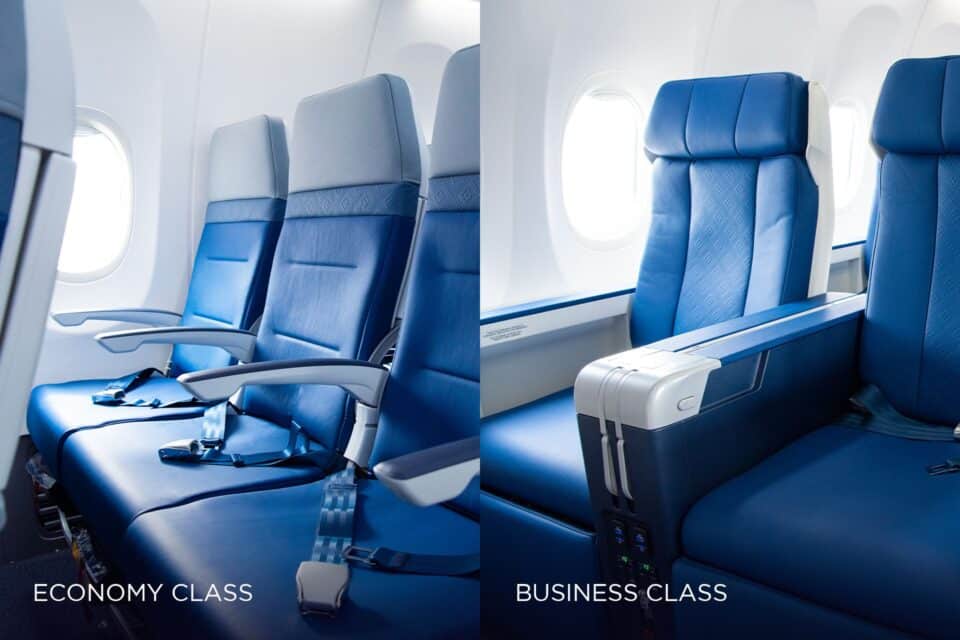Airlines
How to choose best airline seats
Here are some tips for choosing the best airplane seats.

It’s crucial to pick the appropriate seat when making a flight reservation. When making a reservation or checking in online, more airlines now give you the option to pay and reserve your seats online. This is the most secure way to attempt to secure the seat of your choice, but keep in mind that it is not always a guarantee that you will get this seat on your flight.
Spirit Airlines employees charged in $238,000 reservation scheme(Opens in a new browser tab)
Front section
A smooth and quiet ride is frequently experienced when sitting in the front of the plane. You’re more likely to get your preferred meal choice in the front because the staff typically starts there before moving to the back to serve food and beverages.
How does a Black Box Work ? its importance in an Aircraft.(Opens in a new browser tab)
Middle seats
Most of the time, the middle seat is the least desired position. This is especially true on airlines where the centre section of the cabin may offer a 5-across layout. If you choose the middle seat, you will have to ask two other passengers to move every time you need to use the washroom, stretch your legs, or do other things.
China’s top 3 airlines will purchase nearly 300 Airbus A320neo aircraft.(Opens in a new browser tab)
Window seats
A window seat may be the best choice if you want to board the flight and sleep as effectively as possible. You also have the outer cabin wall to lean against so you won’t wake up your fellow passengers. But keep in mind that some aircraft have more curved cabin walls than others, so a window seat may feel like it has less shoulder room than other seats.
Exit Row
You do get a lot more legroom in an exit seat. The majority of airlines now charge an extra fee to sit in the exit rows, while others will assign at check-in. It’s surprising that some airlines still favour these seats for significantly taller passengers.
Avoid the Toilet and Galley areas!
On most aeroplanes, the toilet flush is incredibly loud, and after several hours of continuous repetition, you will find this incessant noise interruption to be very annoying. This is in addition to the obvious fact that being seated next to or directly behind the toilet can result in unpleasant odours and other things wafting around you. You might grow weary of the light intrusion during the night or while you are sleeping. Additionally, similar to some bulkhead or exit seat positions, you will discover that there are frequently a lot of passengers milling around your seat area as they line up for the washroom.
The level of pedestrian traffic between the cabin staff and passengers will be much higher if you are seated next to or across from the galley areas. Additionally, the curtains may not always be kept closed, allowing for light intrusion, and no matter how hard the staff tries, the preparation and clearing of meals will result in the galleys being quite noisy during these times of the flight.

Airlines
Sanctions & Engine Issues Ground Half of Russia’s A320neo fleet

Russia’s aviation sector, already strained by Western sanctions, faces another setback as nearly half of its Airbus A320neo family aircraft are grounded due to unresolved engine issues.
This development highlights the growing challenges for russia commercial aircraft in maintaining their fleets under the weight of global restrictions and limited access to spare parts.
Out of the 66 Airbus A320neo and A321neo jets in Russia, 34 are now out of service, according to the Kommersant business newspaper. These planes are powered by engines manufactured by Pratt & Whitney, a subsidiary of RTX Corporation.
DAMAC Air: Dubai’s New Luxury Airline Offers Free Flights for Registration
The engines are affected by a previously identified defect in the metal used for certain parts, prompting accelerated inspections and maintenance.
Sanctions have compounded the issue, blocking the supply of essential components from major manufacturers like Boeing and Airbus. Without proper maintenance, experts warn that these aircraft may face decommissioning as early as 2026.
COMAC Unveils Plans for the C929 to Rival Airbus and Boeing
Airlines like S7, which operates a significant portion of these grounded jets, plan to conserve the engines for future use during peak travel seasons. However, reports suggest that over 20 of S7’s Airbus planes have engines that have already reached the end of their operational lifespan. Recently, russia seeks assistance from kazakhstan’s airlines to bolster its domestic flights.
While some A320neo and A321neo planes in Russia are equipped with French-made LEAP engines, which are seen as less problematic, the challenges remain daunting.
The situation underscores the long-term impact of sanctions on Russia’s aviation sector and the increasing difficulties in keeping its modern fleets operational.
-

 Aviation2 months ago
Aviation2 months agoMicrosoft Flight Simulator Raises $3 Million to Bring Back the An-225 Mriya
-

 Airlines2 months ago
Airlines2 months agoQantas Engineers Stage Walkout Over Cost of Living Concerns
-

 Airlines2 months ago
Airlines2 months agoQatar Citizens Can Travel to the United States Without a Visa
-

 Aviation2 months ago
Aviation2 months agoQatar Airways bans these new Electronic Devices on plane
-

 Airlines2 months ago
Airlines2 months agoJapan Airlines Rolls Out Free Domestic Flights to International Passengers
-

 Defence2 months ago
Defence2 months agoWhich Country Has the Largest Fleet of Fighter Aircraft?
-

 Airport2 months ago
Airport2 months agoWestern Sydney Airport Welcomes Its First Plane After 6 Years of construction
-

 Travel2 months ago
Travel2 months agoQatar Airways Launches Four Additional Flights from Amsterdam









